The handpan's ethereal, resonant tones have captivated musicians and audiences worldwide, but capturing its sonic beauty through recording or amplification presents unique challenges. Whether you're preparing for a live performance or setting up a home recording session, understanding how to mic a handpan properly can make the difference between a flat, lifeless sound and a rich, dimensional audio experience that does justice to this remarkable instrument.
In this comprehensive guide, we'll explore professional techniques for miking handpans in both studio and live settings, helping you achieve the pristine sound quality your music deserves.
Understanding the Handpan's Acoustic Properties
Before diving into microphone placement techniques, it's essential to understand what makes the handpan's sound so unique. The instrument produces complex overtones and harmonics that radiate in multiple directions. Sound emanates not only from the top playing surface where the tone fields are struck but also from the bottom opening (the gu) and the entire shell of the instrument, which acts as a resonating chamber.
This omnidirectional sound projection means that microphone placement becomes critical. Unlike instruments with a single sound source, the handpan requires a more thoughtful approach to capture its full tonal spectrum. The delicate balance between the fundamental notes, overtones, and the subtle metallic shimmer that characterizes the handpan's voice must all be preserved in your recording or live mix.
When you're first learning handpan techniques, you'll notice how different playing styles affect the instrument's sound. These variations in dynamics and timbre need to be captured accurately by your microphone setup.
Essential Microphone Types for Handpan Recording
Condenser Microphones
Condenser microphones are the gold standard for handpan recording due to their sensitivity and ability to capture the instrument's subtle nuances. Large-diaphragm condensers excel at capturing the warm, full-bodied low end and the delicate high-frequency shimmer, while small-diaphragm condensers provide excellent transient response and detail.
Popular choices include the Audio-Technica AT4040, Rode NT1-A, and Neumann U87 (if budget allows). These microphones offer a flat frequency response that captures the handpan's natural tone without excessive coloration.
Dynamic Microphones
While less common in studio settings, dynamic microphones like the Shure SM57 or Sennheiser MD421 can work well for live performances where durability and feedback rejection are priorities. Dynamic mics are also excellent for capturing the attack and presence of more aggressive playing styles without harsh peaks.
Ribbon Microphones
Ribbon microphones offer a smooth, natural sound that can beautifully complement the handpan's tonal characteristics. Their figure-8 polar pattern can be advantageous when you want to minimize room reflections, though they require careful handling due to their delicate construction.
Studio Recording Techniques for Handpan
Single Microphone Setup
For solo handpan recordings, a single well-placed microphone can capture stunning results. Position a large-diaphragm condenser approximately 12-18 inches above the center of the instrument, angled slightly toward the playing surface. This placement captures both the direct sound from the tone fields and some of the resonance from the shell.
The key is finding the sweet spot where the fundamental tones and harmonics blend naturally. Start with your microphone directly above the ding (central note) and make small adjustments while listening critically. Moving the microphone closer will emphasize the attack and presence, while pulling it back will capture more of the instrument's natural reverb and sustain.
Stereo Recording Configurations
Stereo micing opens up beautiful spatial possibilities for handpan recording. Here are the most effective stereo techniques:
ORTF Configuration: Place two cardioid microphones at a 110-degree angle, 17cm apart. Position this array 18-24 inches above the handpan's center. This technique provides excellent stereo width while maintaining a strong center image, perfect for capturing the full tonal spectrum as your hands move around the instrument.
XY Technique: Two cardioid microphones positioned as close together as possible, angled at 90 degrees. This coincident technique eliminates phase issues and provides a focused stereo image. It's particularly effective when you're mastering handpan rhythms and patterns that move between different tone fields.
Spaced Pair: Two omnidirectional or cardioid microphones placed 3-6 feet apart, each positioned over opposite sides of the handpan. This creates a wide stereo field but requires careful phase checking. This approach works beautifully when you want to emphasize the handpan's spatial characteristics.
The Gu Microphone Technique
Don't overlook the gu—the bottom opening of the handpan. Placing a microphone underneath the instrument, aimed at or inside the gu, captures the deep, resonant low-end that gives the handpan its characteristic warmth. This technique is particularly effective in multi-microphone setups.
Position a small-diaphragm condenser or even a boundary microphone 6-12 inches below the gu. Blend this signal with your overhead microphones to create a fuller, more three-dimensional sound. Be careful not to overdo it—the gu mic should enhance rather than dominate the mix.
Room Microphones
If you're recording in an acoustically treated space or a room with pleasant natural reverb, consider adding room microphones to your setup. Place a stereo pair 6-10 feet away from the handpan to capture the ambience and space around the instrument. This adds depth and context to your recording, making it feel more natural and immersive.
Live Performance Micing Strategies
Live performance presents different challenges than studio recording. You need to balance sound quality with practical considerations like feedback prevention, stage volume, and quick setup times.
Single Microphone Live Setup
For intimate venues and solo performances, a single cardioid condenser on a short boom stand positioned above the handpan provides reliable results. Place it 10-14 inches above the center of the instrument, angled slightly downward. The Shure Beta 87A or Audio-Technica AT2035 are excellent choices that offer good feedback rejection.
Work closely with your sound engineer to set appropriate gain levels. The handpan's dynamic range—from gentle, whisper-soft touches to powerful slaps—requires careful gain staging to avoid clipping on loud passages while maintaining clarity during quiet moments.
Stereo Live Recording
For larger venues or when audio quality is paramount, a stereo overhead setup provides impressive results. Use a stereo bar to mount two small-diaphragm condensers in ORTF or XY configuration. This gives the audience a more immersive experience, allowing them to hear the spatial movement as you play different notes across the instrument.
Dealing with Stage Volume and Feedback
Handpans are acoustic instruments that can be overpowered by loud bandmates. If you're performing with other musicians, consider these strategies:
Monitor Placement: Position stage monitors carefully to avoid feedback. Place them to the sides rather than directly in front of or behind your microphones.
Directional Microphones: Use cardioid or hypercardioid patterns to reject sound from other instruments and monitors.
Sound Check: Take time during soundcheck to identify and notch out any feedback frequencies using graphic or parametric EQ. The handpan's resonant frequencies can sometimes create feedback loops, particularly in the 200-400 Hz range.
Microphone Placement for Different Playing Styles
Your handpan playing technique significantly influences optimal microphone placement.
Melodic Playing
When focusing on melody and gentle dynamics, position your microphone to capture the tonal beauty and sustain of each note. A slightly higher placement (18-24 inches) allows notes to ring out naturally without capturing excessive finger noise or aggressive attack.
Percussive Techniques
For players who incorporate percussive handpan techniques like slaps, rim shots, and finger rolls, bring your microphone closer (10-15 inches) to capture the attack and articulation of these sounds. Be prepared to use a high-pass filter to control any excessive low-end thump from aggressive playing.
Mixed Styles
Most handpan performances combine melodic and percussive elements. A mid-distance placement (14-18 inches) with a quality condenser microphone captures both approaches effectively. Use compression carefully in post-production to balance the dynamic range without squashing the instrument's natural expression.
EQ and Processing Tips for Recorded Handpan
Once you've captured your handpan recording, subtle processing can enhance its natural beauty:
High-Pass Filter: Apply a gentle high-pass filter around 40-60 Hz to remove subsonic rumble without thinning the instrument's low end.
Presence Boost: A subtle boost around 3-5 kHz can enhance clarity and help the handpan cut through a mix, but use restraint—too much can sound harsh.
Air and Sparkle: A gentle high-shelf boost above 10 kHz adds air and shimmer to the handpan's overtones.
Compression: Use gentle compression (2:1 to 3:1 ratio) to control dynamic range while preserving the instrument's expressive qualities. A slow attack time preserves the initial transients that give each note its character.
Reverb: The handpan already has natural sustain and resonance, so reverb should be applied subtly. Plate or hall reverbs with pre-delay can add space without washing out the instrument's inherent clarity.
Common Micing Mistakes to Avoid
Overcomplication: Many beginners use too many microphones, creating phase issues and a muddy sound. Start simple and add microphones only when you have a specific sonic goal.
Ignoring the Room: Room acoustics dramatically affect your recording. If your space sounds bad, your recording will too. Consider acoustic treatment or recording in a better-sounding room.
Improper Gain Staging: Setting input levels too high causes distortion, while too-low levels introduce excessive noise. Aim for peaks around -12 to -6 dB, leaving headroom for louder passages.
Forgetting About Phase: When using multiple microphones, always check phase relationships. Flip the phase on your bottom microphone (gu mic) if the combined signal sounds thin or hollow.
Over-Processing: The handpan's natural tone is beautiful. Resist the urge to over-EQ or heavily compress. Subtle enhancements work best.
Advanced Multi-Microphone Techniques
For professional recordings, consider a comprehensive multi-mic approach:
-
Top stereo pair: Captures overall sound and spatial imaging
-
Gu microphone: Adds low-end warmth and resonance
-
Close spot microphones: Capture specific tone fields for individual control in mixing
-
Room microphones: Add natural ambience and depth
This setup gives you maximum flexibility in post-production, allowing you to craft your ideal sound by blending different elements. However, it requires careful phase management and more complex mixing.
Preparing for Your Recording Session
Proper preparation ensures the best results:
Clean Your Handpan: Oil and residue from your hands can affect the instrument's tone. Clean your handpan before recording sessions.
Warm Up: Handpan chord progressions and warm-up exercises help you settle into your playing and ensure the instrument is resonating optimally.
Choose the Right Room: Record in the quietest, best-sounding space available. Rooms with carpets, curtains, and furniture absorb reflections and create a more controlled recording environment.
Use Quality Cables: Poor cables introduce noise and degrade signal quality. Invest in good XLR cables for your microphone connections.
Test and Listen: Always record test clips and listen through good headphones or monitors before committing to a full take.
Conclusion
Learning how to mic a handpan effectively takes experimentation and patience, but the results are worth the effort. Whether you're capturing the intimate details of a solo performance or amplifying your sound for a live audience, the principles outlined in this guide will help you achieve professional-quality audio that honors the handpan's unique voice.
Remember that every handpan sounds slightly different, every room has its own acoustic character, and every player has a unique style. Use these techniques as starting points, then trust your ears to guide you toward the sound you're seeking. The more you experiment with microphone placement and techniques, the more intuitive the process becomes.
As you continue developing your skills and exploring this remarkable instrument, you'll discover that great handpan recordings come from a combination of technical knowledge, artistic sensitivity, and a deep understanding of your instrument's character. With practice and attention to detail, you'll be able to capture performances that truly reflect the magic of the handpan.




